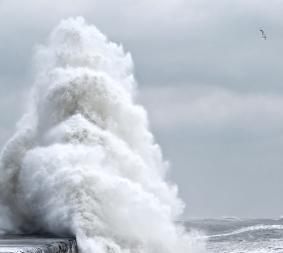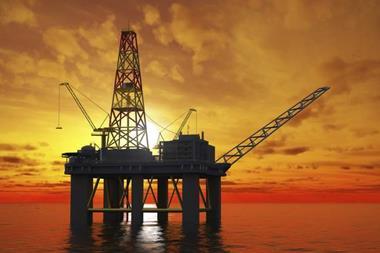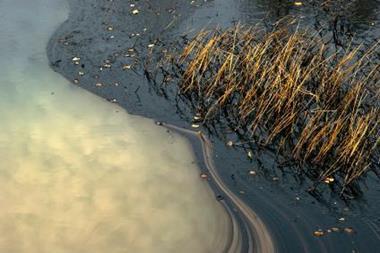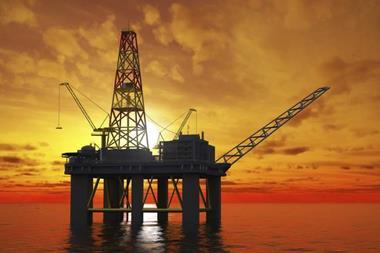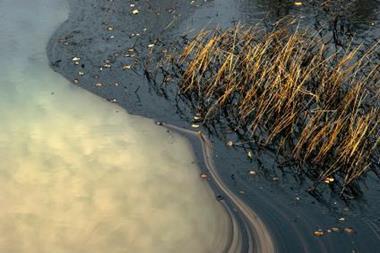With a reserve limit of $700m, BP’s captive insurer is unlikely to make much of a dent in covering the oil major’s losses from the Deepwater Horizon oil spill, but Jupiter has still proved its worth
When an explosion on the Deepwater Horizon oil platform occurred on 20 April this year, killing 11 platform workers and injuring 17 others, it quickly became apparent that the ensuing oil spill had the potential to become a major environmental disaster. For nearly three months, an estimated 53,000 barrels of oil a day spewed into the Gulf of Mexico before the wellhead was finally capped on 15 July. The clean-up is expected to take months, if not years.
BP is the energy company at the centre of the disaster. The clean-up costs, reputational damage and related litigation are expected to cost it billions of dollars in claims for years to come. Had BP purchased its insurance from the commercial market, it is likely that such a loss would have caused a sharp contraction of capacity in the energy markets and a resulting hike in rates.
But BP has a Guernsey-based captive insurer called Jupiter, which has a policy limit of $700m (£434m) and does not buy reinsurance protection. Instead, BP, with its deep pockets, is expected to shoulder the bulk of the loss, announcing in June that it was establishing a $20bn claims fund over the next three and a half years to “satisfy legitimate claims, including natural resource damages and state and local response costs”.
But not all parent companies have such financial capabilities. So, in these circumstances, what is the role of the captive insurer, and is it compromised by the parent’s potential for loss on a catastrophic scale?
The situation of BP and its captive insurer is fairly unique within the captive arena, explains Kane Global consultant Clive James. “As a rule, the company buys very little insurance, as much of its cover goes through its captive Jupiter in Guernsey and they take very high limits within that captive. As a consequence of this, they don’t tend to access the reinsurance market an awful lot. The direct impact of the disaster on the captive will be fairly substantial, particularly as it will have to cover the costs of the massive clean-up operation. There will therefore be a relatively limited impact on the reinsurance market, as BP’s captive will take the majority of the hit.”
“In general, most captives have fairly strong reinsurance programmes so that they limit their potential liabilities in the event of catastrophe losses,” he continues.
“But BP is unique in terms of the size of the company, as it has enormous amounts of reserves. A lot of captives can take fairly big hits, but it would be unusual to see exposures greater than $100m in terms of aggregate losses and, in the vast majority of cases, the figure will be a lot less because they simply wouldn’t have the capabilities to cover such losses.”
Downgrade woes
In June, AM Best and Standard & Poor’s downgraded Jupiter’s financial strength rating, citing concerns over the full potential impact of the oil spill on parent company BP. “Although BP has recently agreed to establish a $20bn claims fund, given the magnitude of this event it is currently impossible to assess the ultimate impact on BP, both in terms of financial liabilities and reputational damage,” AM Best wrote.
To a certain extent, the rating of a captive insurer is dependent upon the rating of its parent. In the case of a catastrophic loss, which undermines the capital position of the parent, a captive will be more susceptible to a downgrade even if its financial position is not really in question.
However, AM Best assistant vice-president Steven Chirico says: “Is it wholly reliant on the parent company? Absolutely not. If the parent company were to get dragged down to a BBB-, it wouldn’t necessarily be a stress on the captive’s A- rating. It would only be if we felt the parent company’s business profile is compromised.”
One reason for the guarded attitude towards BP was the potential hit to its reputation risk – a difficult factor to quantify. The widespread media attention and political wrangling involved in what was the worst US environmental catastrophe since the Exxon Valdez oil spill in Alaska in 1989 had a huge impact on BP’s share price, which had lost almost half its value by June.
While Jupiter did not have a reinsurance layer to absorb losses above its reserve maximum of $700m, the additional liability was retained by the parent company. In such a situation, the captive is not intended to deal with catastrophic-scale losses, explains Chirico.
“We are not necessarily experts in analysing the oil industry. We understand from dealings with oil industry captives that when you’re talking about the numbers from a surplus and capital perspective and the ability to obtain liquidity in the marketplace for large oil companies, it’s hard to imagine how big a loss needs to be for a company to become compromised. The oil companies are so large and have such large capital [cushions] they can withstand a very severe financial loss.”
Transferring the risk
Typically, the captives of energy firms or large drug companies, for example, would look to transfer catastrophe risk beyond the first $100m or $200m to the reinsurance market. Here, the value of the captive is demonstrated by it taking a share in the loss, rather than being set up to shoulder the entire burden.
By taking a material line, the captive demonstrates it has a vested interest in taking risk mitigation and control more seriously than if it were ceding 100% of the risk into the commercial (re)insurance market.
“When you have your own captive and you’re retaining risk, the bet is you’re not going to have a loss and, if you do, you’re going to pay for it severely,” Chirico says. “With commercial insurance, you’re betting that you are going to have a loss, so right from the get-go you’ve misaligned your interest – you’re paying money for a premium and if you don’t have a loss, all you’ve done is you’ve lost money.”
Just because a captive is not set up to take the burden of catastrophe loss does not negate its value, argues former Airmic chief executive and chair of the Airmic captive interest group, Alan Fleming. He was risk manager at chemical giant ICI during the liability crisis of the mid-1980s when premium rates for covers like general liability and medical malpractice soared.
“I don’t think a loss like this is necessarily bad news for captives – it is bad news for BP,” he explains. “Sometimes when something like this happens, the market reacts very defensively. That’s what happened in the 1980s with the liability crisis: everyone just shut up shop. Because we had our own captive insurance company, we were able to continue to offer cover up to a demand that we could finance and then on the basis of that we could continue to try to buy reinsurance protection.”
Similar-sized losses in the commercial insurance and reinsurance market have caused serious dislocations in the past. After Hurricane Katrina in 2005, which cost the industry in excess of $40bn, prices increased by 100% on some catastrophe-exposed lines, while capacity for retrocession was almost impossible to find.
“One of the reasons BP moved away from the insurance market was the capacity was not there for this type of environmental loss,” Fleming continues.
“When I was at ICI, the environmental exposures were not readily insurable either but there were enormous potentials in relation to a particular event.”
Keeping your independence
The key lesson for captives to take from the BP experience is to maintain their independence from the parent company. As long as a captive is separately managed and does not expose all its capital to one event, in theory it should be able to absorb a loss on the scale of the Deepwater Horizon explosion and oil spill, regardless of whether the lion’s share of the loss is transferred to the reinsurance market or retained by the parent.
“When you think back to the days of Maxwell, about the only solvent part of the business in the longer term was the captive insurance company,” Fleming says.
If anything, he thinks the bigger risk is that of the counterparty. “Unless it’s a non-insurable event, I would imagine that the biggest risk to the captive would be counterparty risk, where they’ve taken on a fairly severe natural catastrophe type exposure and the reinsurance doesn’t perform.
“The captive needs to be managed as an independent entity and it shouldn’t be exposing itself to catastrophe risk, even if the parent company is.”
Hosted by comedian and actor Tom Allen, 34 Gold, 23 Silver and 22 Bronze awards were handed out across an amazing 34 categories recognising brilliance and innovation right across the breadth of UK general insurance.






































